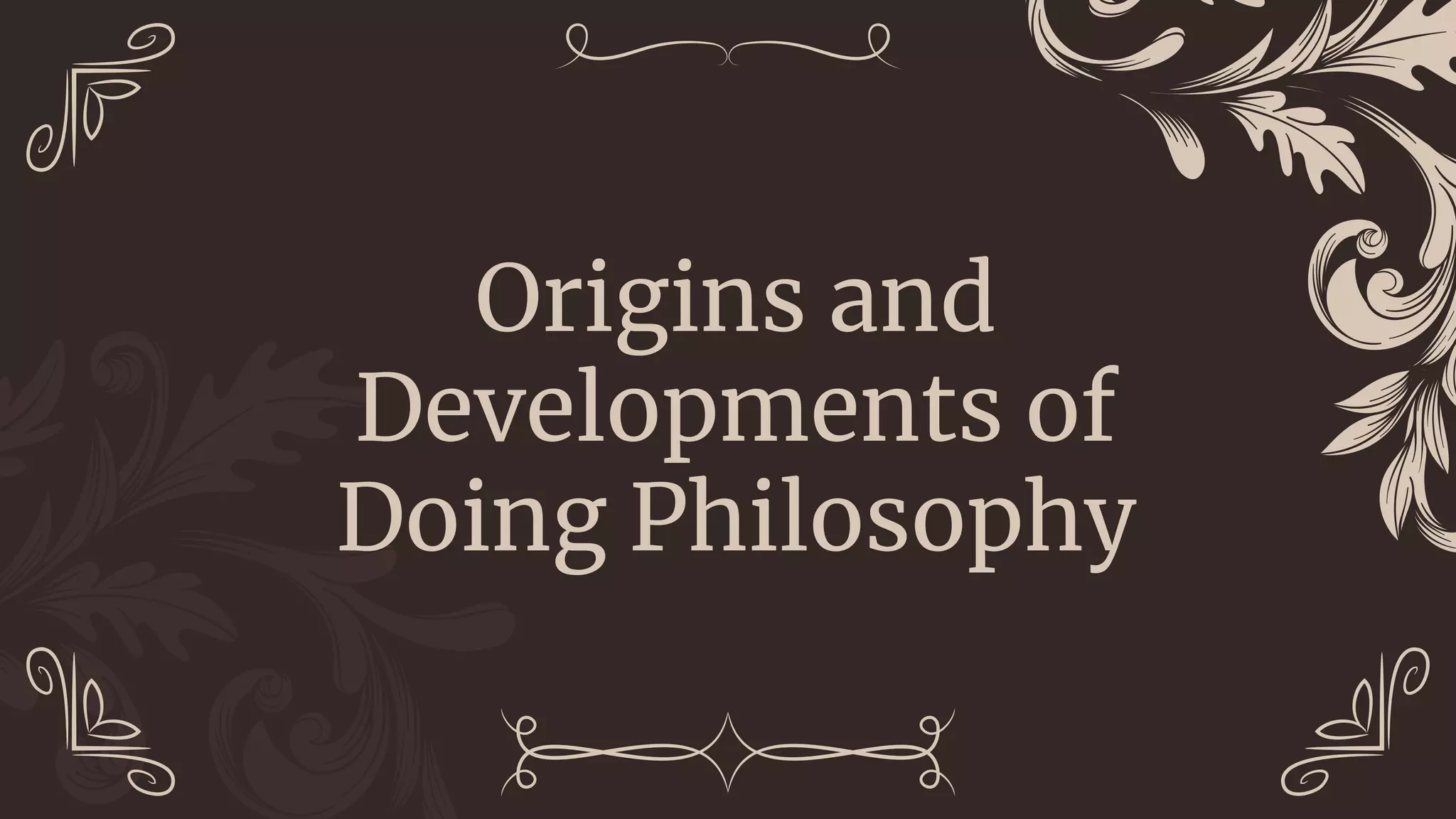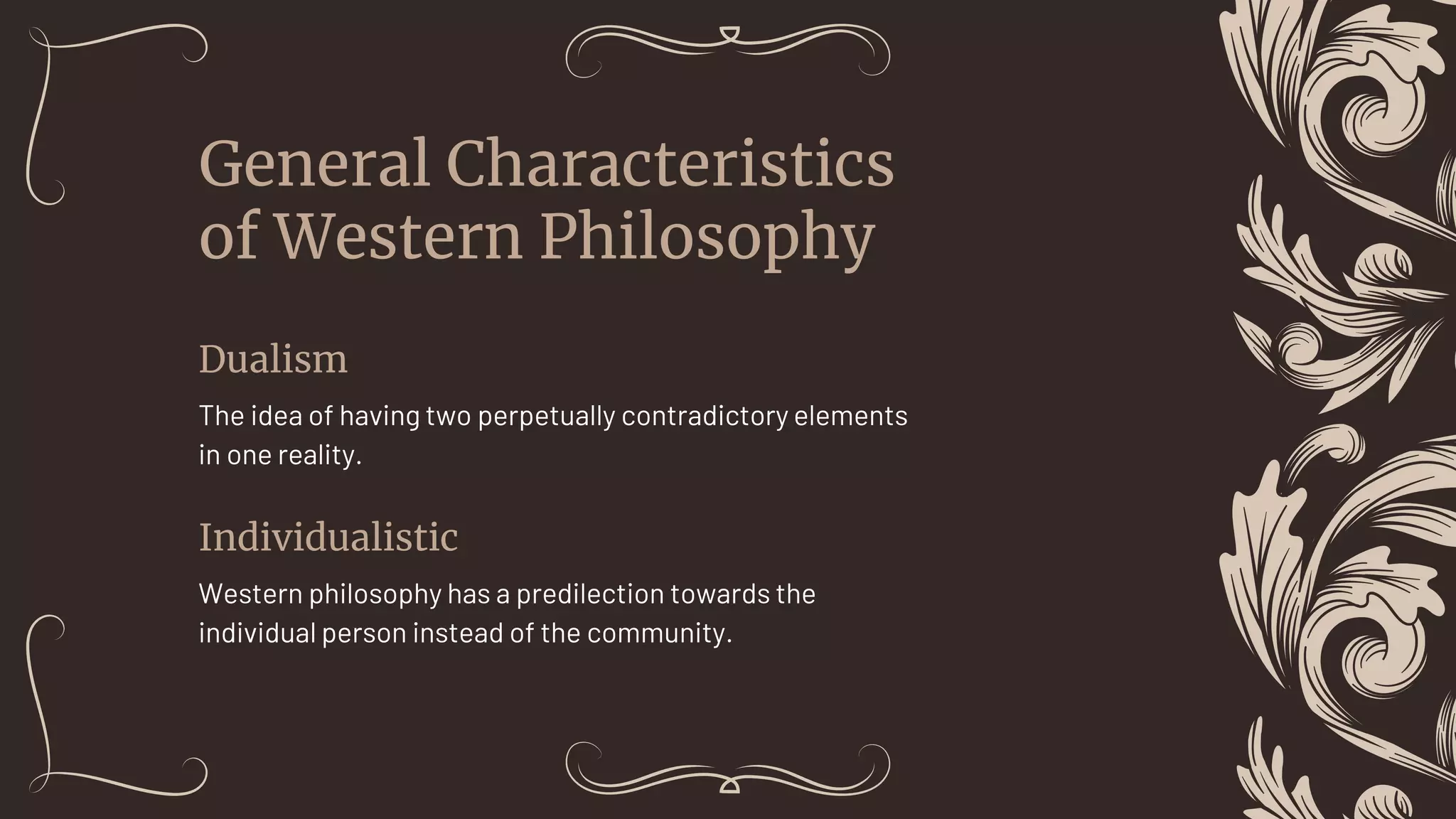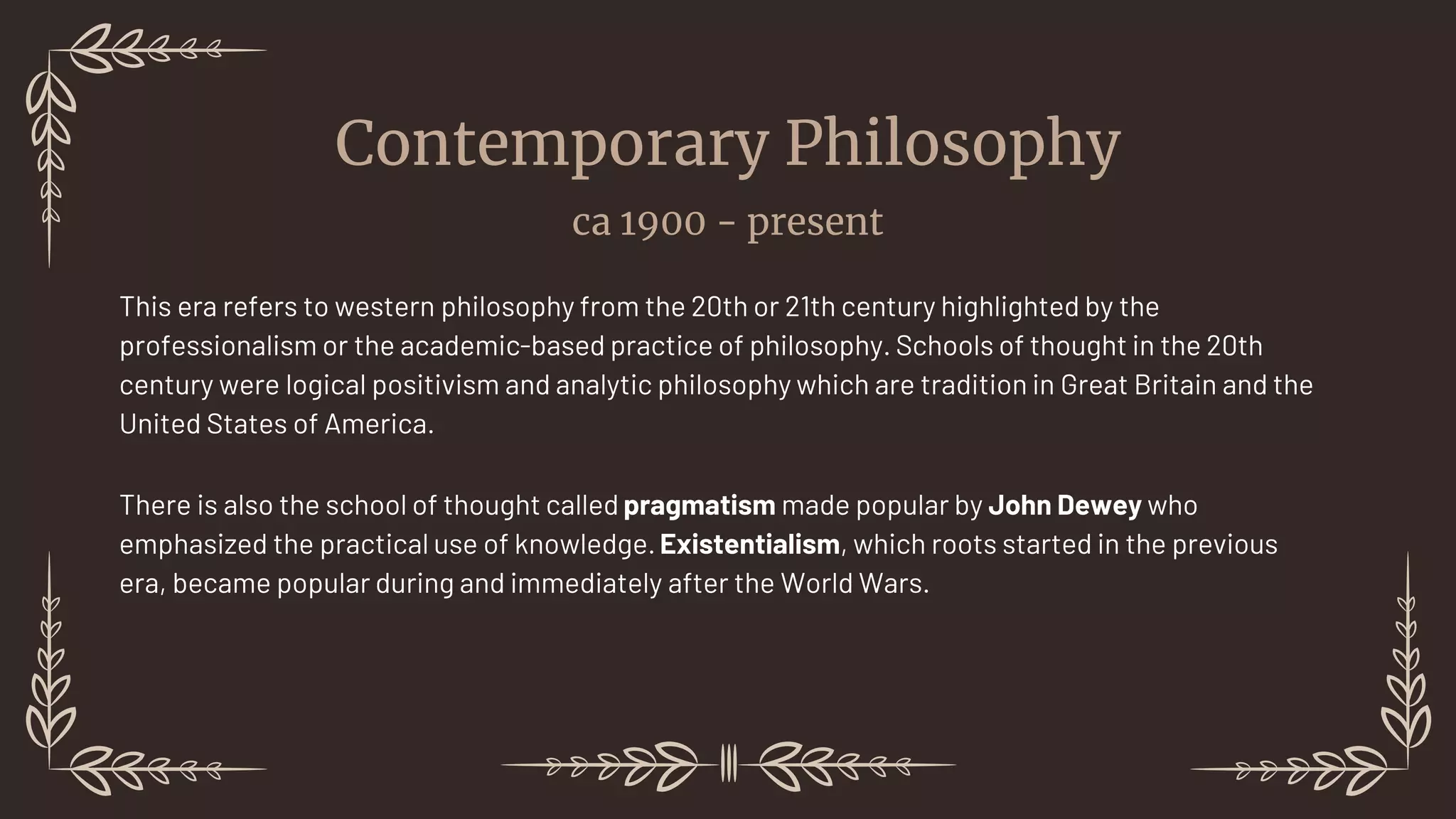This document provides an overview of the origins and developments of Western and Eastern philosophy. It discusses the following key points:
- Western philosophy traces its origins to ancient Greek philosophers before Socrates, Plato, and Aristotle. It developed through four historical periods: Ancient, Medieval, Modern, and Contemporary.
- Eastern philosophies emerged in countries like India, China, and Japan. They are often woven with religions like Hinduism, Buddhism, Confucianism, and Taoism. Eastern philosophies emphasize harmony between people and nature.
- Key figures who influenced Western philosophy include Socrates, Plato, Aristotle, Thomas Aquinas, Descartes, and Marx. Eastern philosophies include Hinduism





















